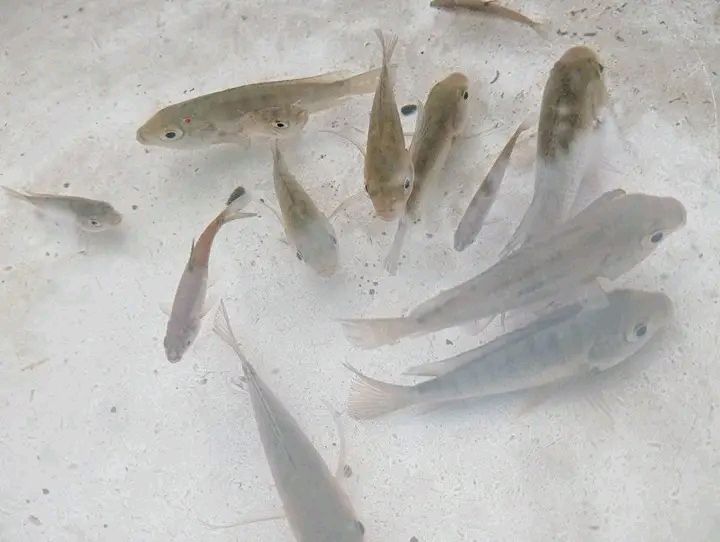
If you’ve been following our fish farming journey, you’ll remember that in our previous post on pond preparation before stocking fingerlings, we looked at the critical steps to take before introducing any fish into your pond. Proper preparation is the foundation of a healthy, productive pond.
Now comes the exciting part — actually stocking your pond with fingerlings. But stocking is not just about releasing fish into water. It involves careful handling to reduce stress, monitoring mortality rates, regularly sampling your stock for growth checks, and ensuring that you’re feeding the right amount at every stage. Skipping or rushing these steps can mean high losses, wasted feeds, and stunted fish.
In this post, we’ll walk through the next step in fish farming: how to stock fingerlings correctly, control mortality, sample for growth, and calculate the right feed amounts. By the end, you’ll have a clear roadmap to move from pond preparation to successful fingerling management.
1. Stocking the Pond with Fingerlings
After weeks of preparation, it’s finally time to introduce fingerlings into the pond. But this stage is delicate, and the way you handle stocking can make or break your farming success.
- Transporting fingerlings: Always use clean containers or oxygenated bags during transport. Keep them shaded and cool to reduce stress.
- Acclimatization: Don’t pour fingerlings directly into the pond. First, float the container in pond water for 15–20 minutes so temperatures equalize. Gradually add pond water into the container before release.
- Stocking density: The right density depends on your farming system. For earthen ponds, a common recommendation is 2–3 fingerlings per m², while intensive systems can go higher with proper aeration and management.
- Best time of day: Stock early in the morning or late in the evening when water temperatures are cooler and oxygen levels are higher.
👉 Remember: stressed fingerlings are more vulnerable to disease and mortality, so gentle handling is non-negotiable.
2. Mortality Control
Even with the best handling, some losses are normal after stocking — usually 5–10%. What matters is how you minimize and monitor mortality.
- Check survival within 24 hours: Walk around the pond edges to spot any dead or weak fingerlings.
- Identify common causes of death: Poor acclimatization, low oxygen, predators (birds, frogs, snakes), and handling injuries.
- Preventive measures:
- Install bird nets or scarecrows to keep away predators.
- Ensure inlet water is screened to prevent entry of wild fish or pests.
- Avoid sudden water changes or adding chemicals immediately after stocking.
👉 If you experience mortality above 15–20%, investigate immediately — it’s usually a sign of poor water quality or disease introduction.
3. Sampling and Growth Monitoring
Once fingerlings settle in, the next task is regular sampling to track their growth and survival.
- When to sample: Begin 2 weeks after stocking, then continue every 2–4 weeks.
- How to sample: Use a seine net, cast net, or scoop net to collect a representative number of fish (usually 30–50 fish).
- What to measure: Record average weight, length, and check for deformities or disease signs.
- Why it matters:
- Helps calculate the correct feed quantity.
- Detects stunted growth early.
- Confirms survival rates to project harvest yields.
👉 Keep records of every sampling session — data-driven management is what separates profitable farmers from those who operate blindly.
4. Calculating the Right Amount of Feed
Feeding is one of the biggest costs in fish farming — often up to 60–70% of total expenses. Overfeeding wastes money and pollutes water; underfeeding stunts growth. Getting the balance right is critical.
- Feed based on body weight:
- For fingerlings (first 4–6 weeks): feed at 5–10% of total body weight per day.
- As fish grow: reduce gradually to 3–5% of body weight.
- Frequency: Feed 2–3 times daily (morning and evening) to reduce waste.
- Observation method: Watch feeding response — if fish leave uneaten pellets after 10–15 minutes, reduce the amount.
- Quality of feed: Fingerlings need high-protein feed (30–35%). As they mature, lower protein levels are acceptable.
👉 Correct feeding not only ensures faster growth but also reduces water pollution, which keeps your pond environment healthy.
Conclusion
Stocking fingerlings is a turning point in fish farming — but it’s not just about putting fish into water. By following the right stocking procedures, monitoring mortality, sampling regularly, and calculating the right feed amounts, you set the stage for healthy growth and profitable harvests.
In our next post, we’ll look at post-stocking pond management — maintaining water quality, controlling diseases, and preparing your fish for the grow-out stage. Stay tuned!

Disclosure: This banner contains an affiliate link. I may earn a commission if you purchase through it, at no extra cost to you.
